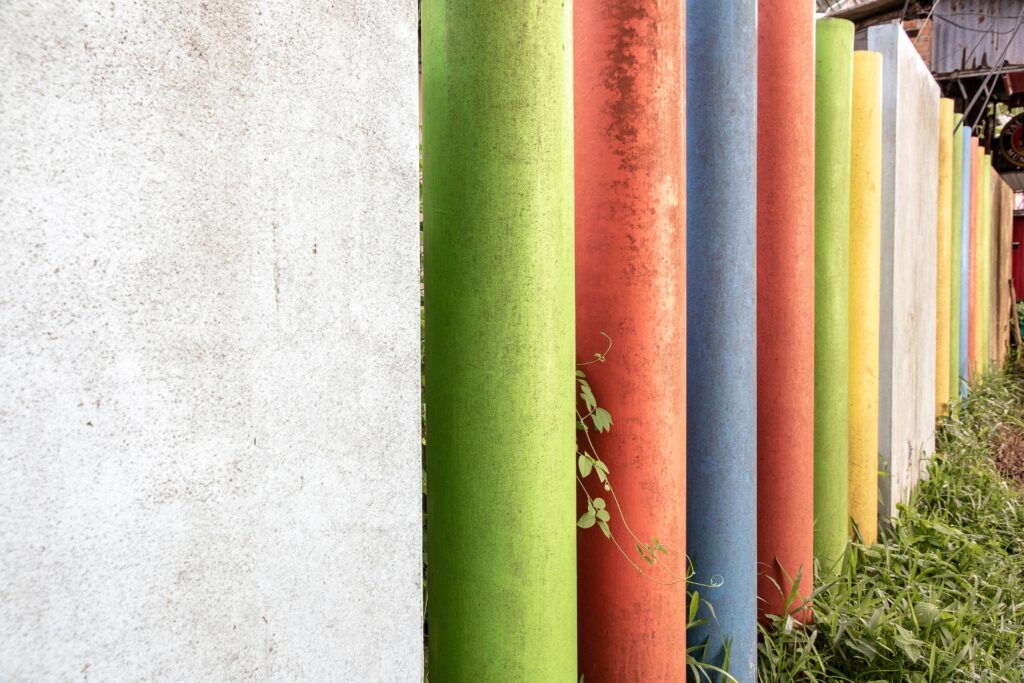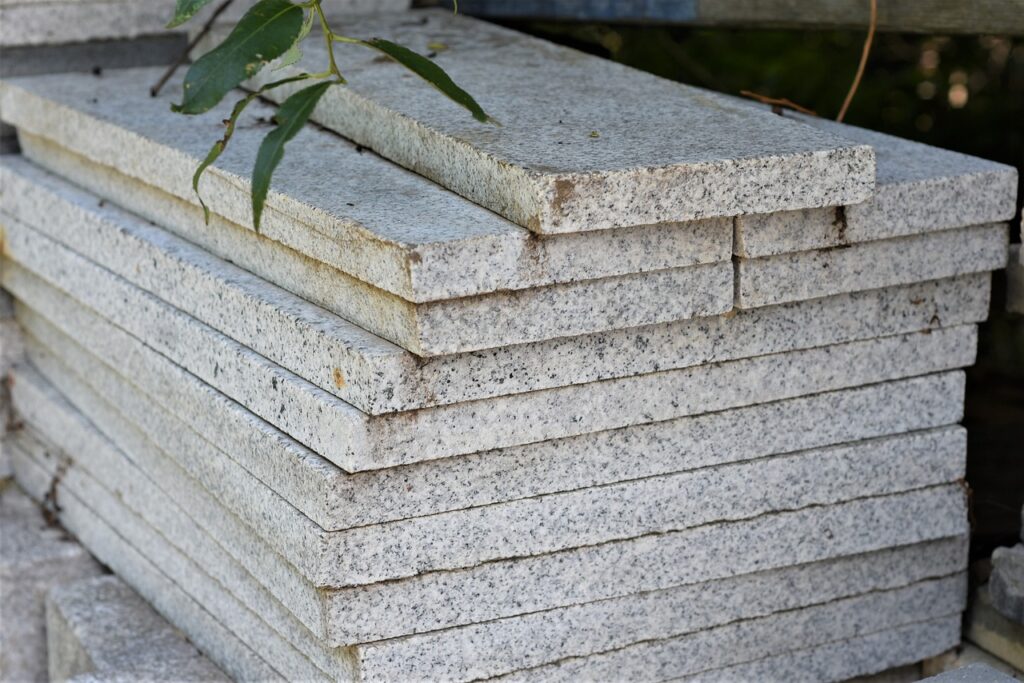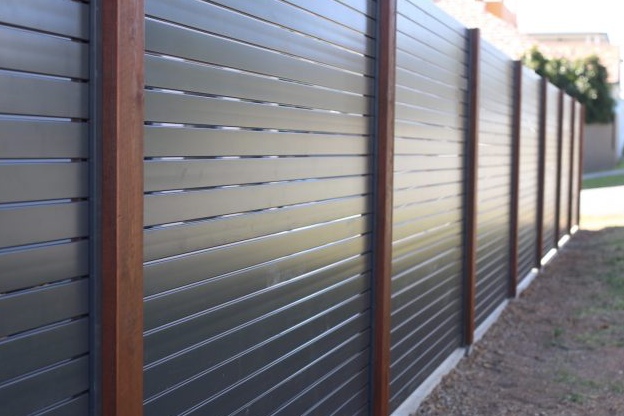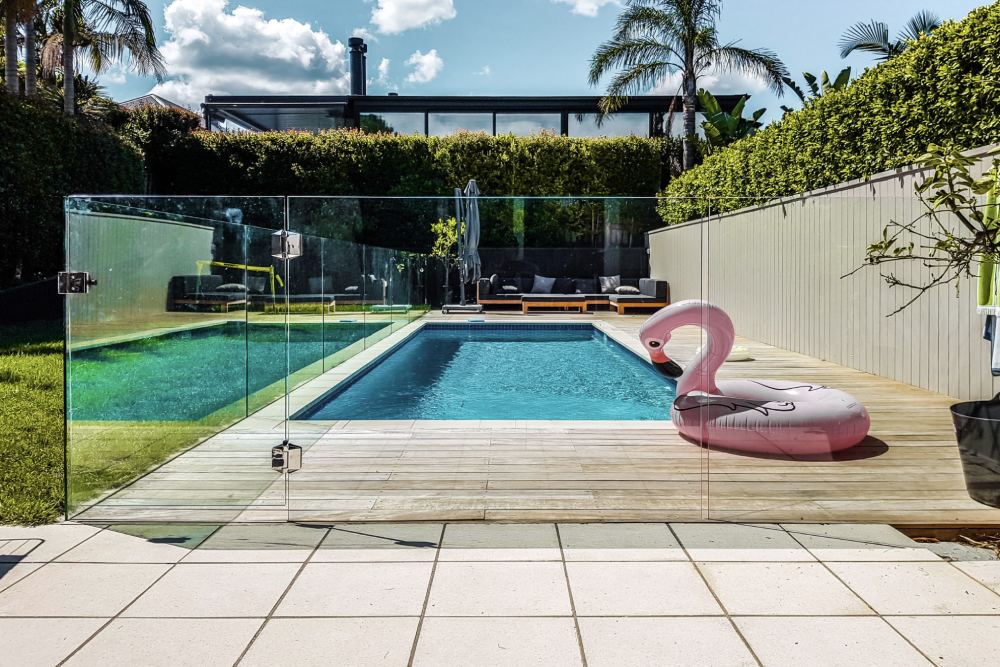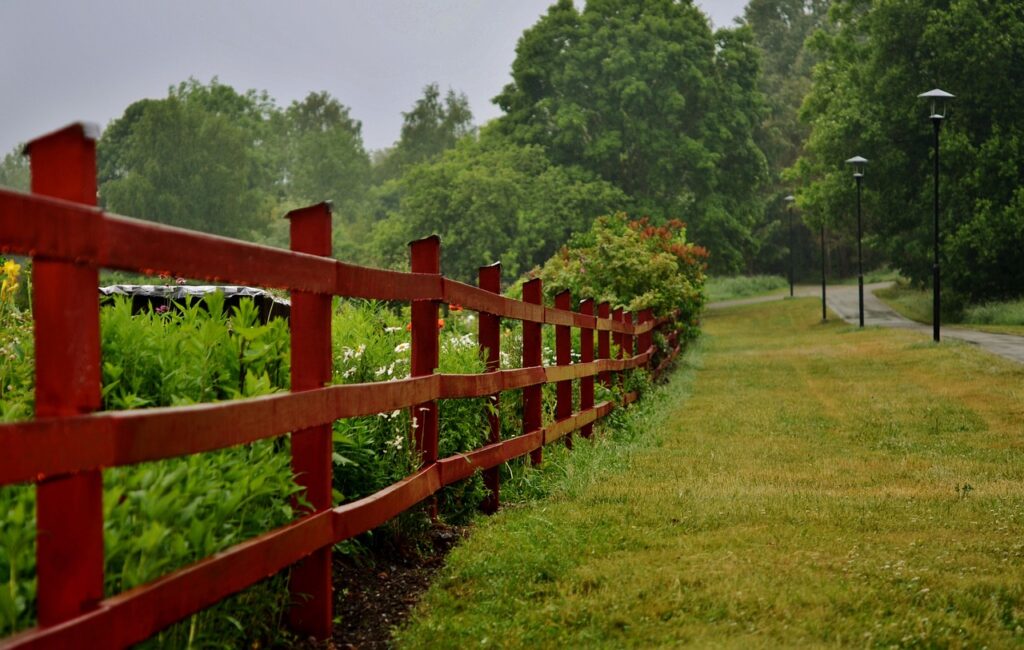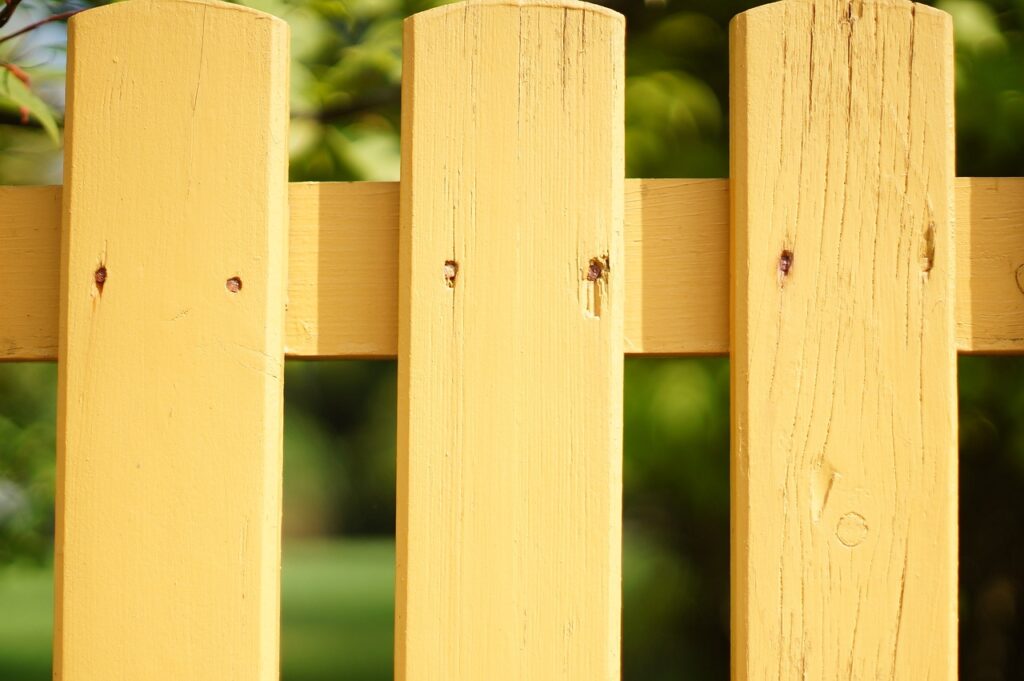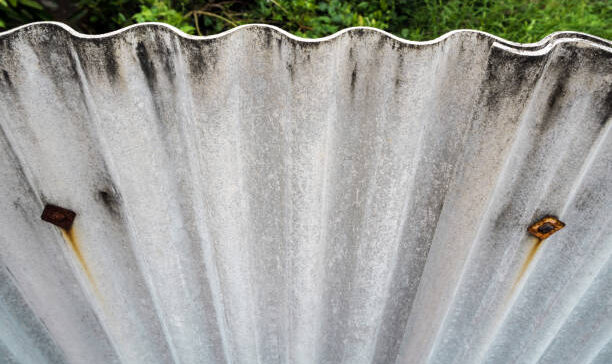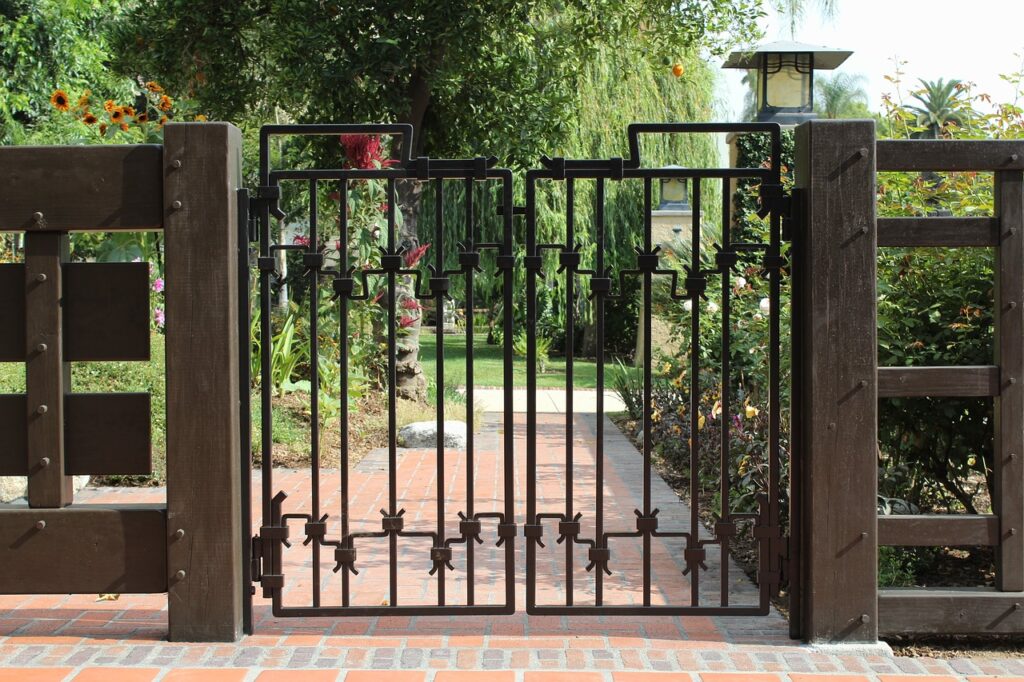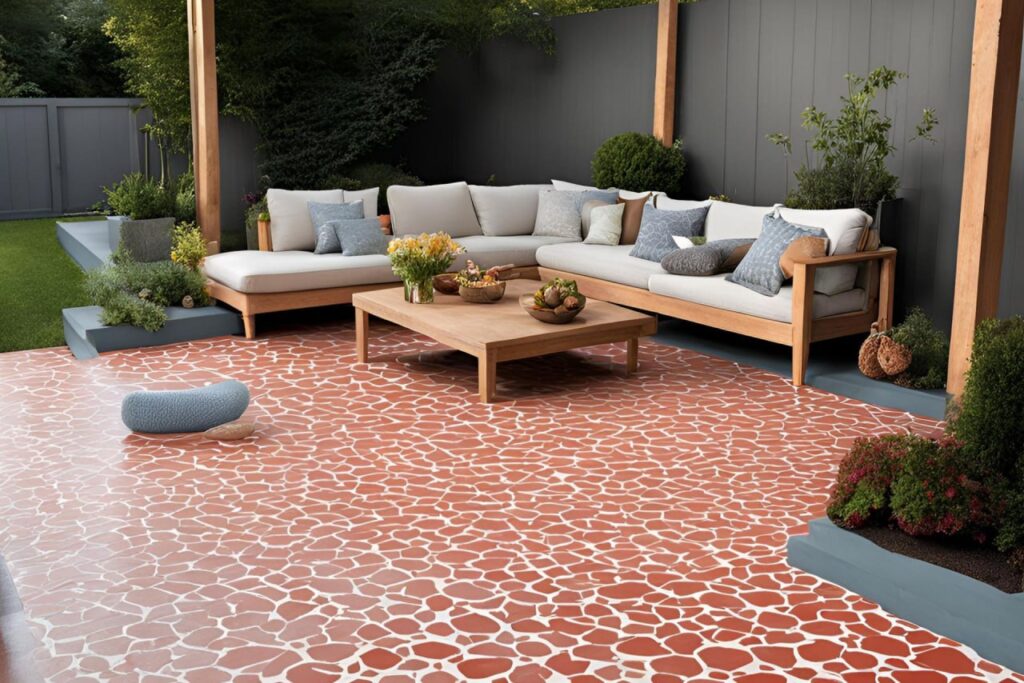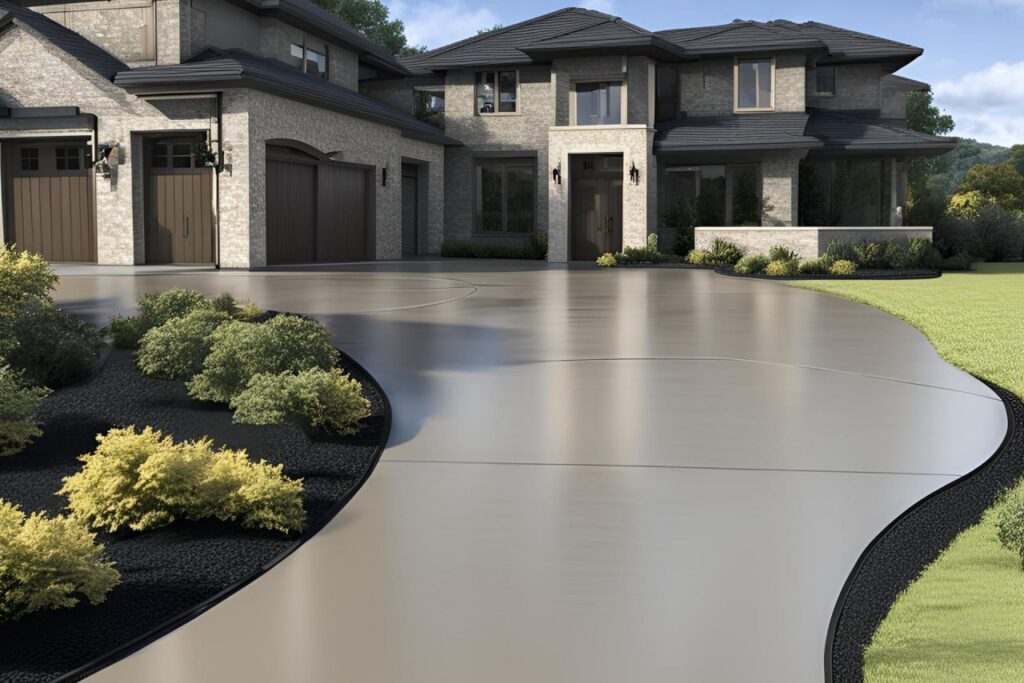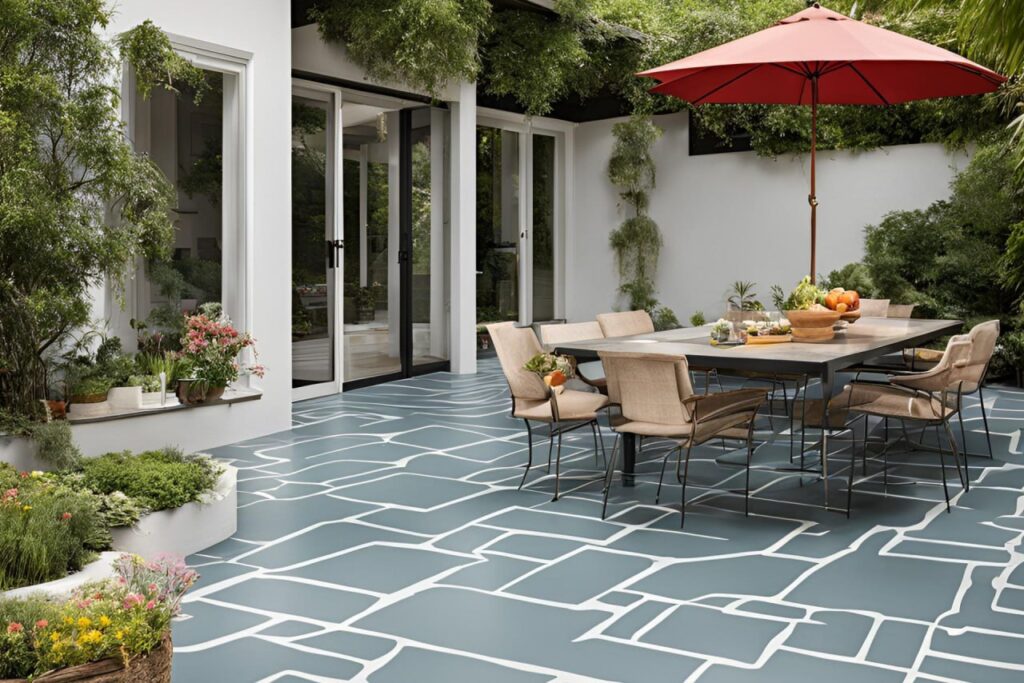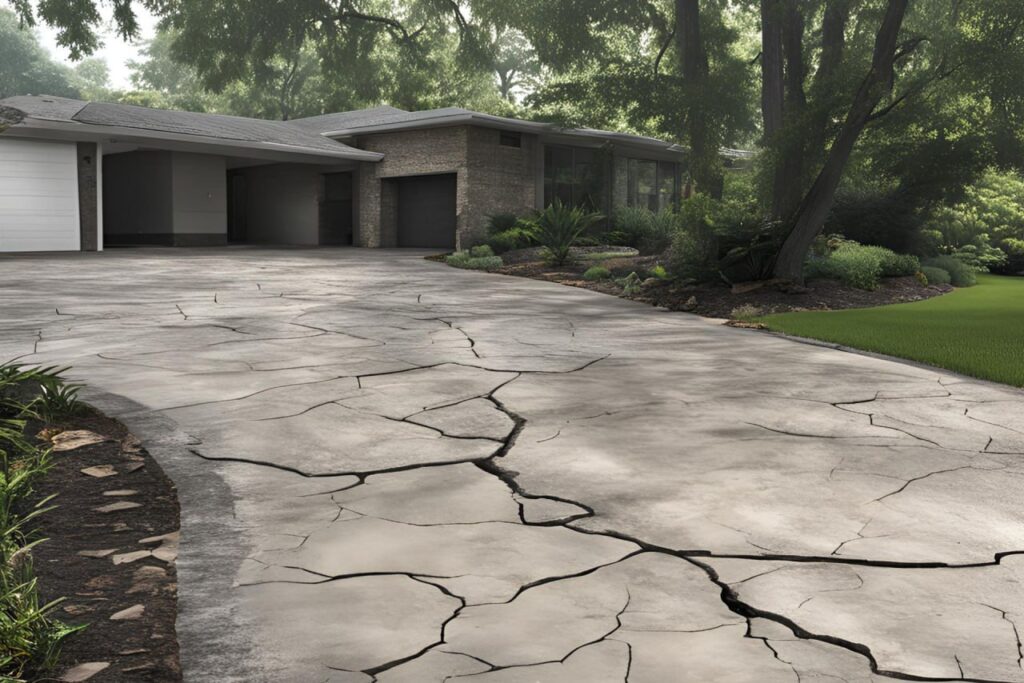Welcome to our guide on choosing the perfect color to paint your concrete fence posts! Whether you’re looking to enhance the curb appeal of your home, blend your fence posts seamlessly into the natural landscape, or add a pop of color for a modern touch, this post will provide all the insights you need. Concrete fence posts often get overlooked when it comes to outdoor design, but with the right color, they can significantly elevate the look of your garden or yard. In this article, we’ll explore the best color options, key factors to consider before choosing, and provide a step-by-step guide on how to paint your concrete fence posts like a pro. Let’s dive in and transform those posts from drab to fab.
The best color to paint concrete fence posts depends on your style and outdoor aesthetic. Popular choices include neutral tones like light grey, beige, and white for a clean, timeless look. Earthy tones such as brown and sage green blend well with natural landscapes, while bold colors like charcoal or black create a modern, striking contrast. When selecting a color, consider your home’s style, the surrounding landscape, and the level of maintenance required to keep the paint looking fresh over time.
- Why You Should Paint Your Concrete Fence Posts
- Factors To Consider Before Choosing A Paint Colour For Your Home’s Exterior
- Popular Colour Choices For Concrete Fence Posts
- Choosing The Right Type Of Paint For Concrete Fence Posts
- Step-By-Step Guide To Painting Concrete Fence Posts
- Creative Ideas For Painting Concrete Fence Posts
- Common Mistakes To Avoid When Painting Concrete Fence Posts
- FAQs: About What Colour To Paint Concrete Fence Posts
- Conclusion
- Find A Professional Fencing Company Near You!
Why You Should Paint Your Concrete Fence Posts
Painting your concrete fence posts isn’t just about adding a splash of color; it’s a smart and effective way to enhance both the appearance and durability of your outdoor space. Here’s a breakdown of the key reasons why painting those often overlooked posts is a good idea:
Enhance Aesthetic Appeal
One of the biggest benefits of painting your concrete fence posts is the visual transformation it can bring to your property. Concrete posts tend to look bland and industrial, but a coat of paint can completely change that. Whether you’re aiming to modernize the space with sleek, bold tones or soften the area with warmer, earthier hues, paint can elevate the overall aesthetic of your outdoor area. A well-chosen color scheme can turn your backyard or front yard into a more inviting, polished space that reflects your style and personality.
Blend with Your Surroundings
The right paint color can help your fence posts blend seamlessly with their natural surroundings. If you’re in a lush, green environment, shades of brown, gray, or even soft greens can help the posts disappear into the landscape, creating a more harmonious look. On the other hand, if you want your posts to be a standout design feature, painting them in a contrasting or bold color can make them pop, adding visual interest to your outdoor design. This flexibility allows you to either complement or enhance the natural beauty around your home, depending on your design goals.
Weather Protection
Beyond aesthetics, painting your concrete fence posts serves a practical purpose: protection. Over time, exposure to sun, rain, wind, and fluctuating temperatures can wear down unpainted concrete, leading to cracks, erosion, or general degradation. A layer of quality exterior paint can act as a protective shield, guarding the posts against these elements. It helps prevent moisture from penetrating the concrete, reducing the risk of freeze-thaw damage in colder climates and protecting against UV rays that can cause fading or weakening in hotter regions. By adding this barrier, you can extend the life of your fence posts and maintain their structural integrity for years to come.
Increase Property Value
First impressions matter, especially when it comes to the exterior of your home. Freshly painted fence posts can enhance your property’s curb appeal, making it more attractive to potential buyers. A well-maintained exterior suggests that the property is cared for, which can positively influence its market value. Even small improvements, like painting your concrete posts, contribute to an overall impression of quality and attention to detail. This can ultimately lead to a higher property value, especially when combined with other aesthetic upgrades to your home’s exterior.
Painting your concrete fence posts is a simple, cost-effective way to improve the look, functionality, and value of your outdoor space. Whether you’re looking to beautify your yard, protect your investment from the elements, or boost your home’s curb appeal, a fresh coat of paint on your concrete posts can make a world of difference. Consider it an upgrade that delivers both immediate visual impact and long-term benefits.
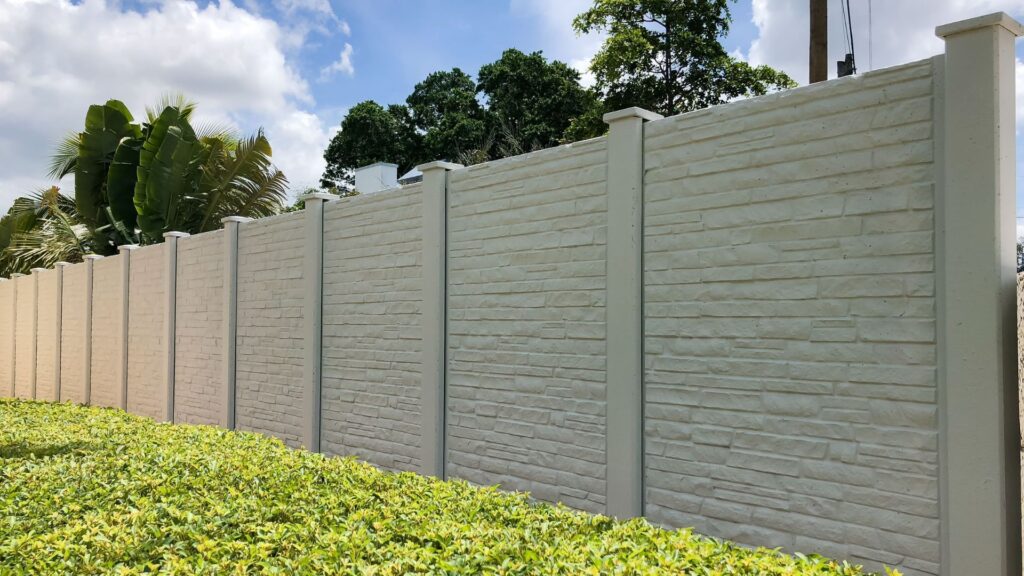
Factors To Consider Before Choosing A Paint Colour For Your Home’s Exterior
When selecting the perfect paint color for your home, it’s essential to look beyond personal preference and consider how it interacts with your surroundings. From the existing landscape to the style of your home, and even practical factors like maintenance and sunlight exposure, each plays a crucial role in determining the best choice. Let’s dive deeper into these key factors to help you make an informed decision.
Consider Your Existing Landscape and Design
Your garden is an extension of your home’s exterior, and its features should guide your choice of paint color. Whether it’s the vibrant greens of your plants, the rustic tones of your garden furniture, or the existing color of your fence, each element contributes to your outdoor aesthetic.
- Matching the Garden’s Palette: If your garden boasts a mix of earthy tones, consider whether you want your home to blend seamlessly into this backdrop. A complementary shade could tie the entire look together, creating a serene and cohesive environment.
- Creating Contrast: On the other hand, if you’re looking to make your home stand out, opt for a color that contrasts with your garden’s features. For instance, a bright or bold color could act as a striking focal point against the natural greenery, giving your home a more dynamic presence.
Before committing to a color, take a step back and visualize how it will look next to the dominant shades of your garden. Think about whether the color will harmonize with your outdoor space or provide an eye-catching contrast.
Match the Colour to Your Home’s Style
The architectural style of your home plays a significant role in determining the best paint colors. Whether your home leans more toward traditional or modern design, your paint choice can either enhance or clash with its aesthetic.
- Traditional Homes: For homes with classic or traditional architecture, neutral tones such as whites, creams, or soft greys tend to work best. These colors maintain the timeless charm that traditional homes are known for, providing a subtle, elegant look.
- Modern Homes: If your home features a contemporary or minimalist design, bolder choices may be more appropriate. Deep charcoal, navy, or even striking shades like turquoise or burnt orange can give modern homes an edgy, sophisticated look.
Matching your paint color to the style of your home helps create a cohesive look that enhances the architectural details rather than competing with them.
Sunlight Exposure and Its Effects
One factor many homeowners overlook when selecting a paint color is how sunlight exposure can impact both the appearance and longevity of the paint.
- Lighter Colors: If your home is exposed to a lot of direct sunlight, lighter colors can help keep the temperature down as they reflect heat. Additionally, these shades tend to maintain their brightness and are less likely to fade over time, even under harsh sun exposure.
- Darker Colors: While darker shades can add drama and depth to your home’s exterior, they absorb more sunlight and heat. This can cause them to fade faster and require more frequent touch-ups. However, in areas with moderate sunlight or if you’re aiming for a more statement-making exterior, darker hues can be stunning.
Consider the orientation of your home and the direction it faces when choosing your color. Areas that get heavy sunlight may need lighter, more sun-resistant shades, while shaded areas can support deeper, richer colors.
Longevity and Maintenance
Lastly, the durability of your paint and the level of maintenance it will require should also factor into your decision. Not all colors and finishes age the same way, and some are better suited to withstand environmental wear and tear.
- Low-Maintenance Colors: Lighter shades like beige, light grey, or cream are less likely to show dirt, grime, and dust buildup, making them a practical choice for homeowners who prefer minimal upkeep.
- Durable Finishes: Matte finishes, while popular for their sophisticated look, may require more frequent cleaning as they tend to attract dirt. In contrast, semi-gloss or satin finishes offer a bit more resilience to dirt, moisture, and other environmental factors. Additionally, many high-quality exterior paints now come with UV protection, making them more fade-resistant.
If your home is located in an area prone to harsh weather conditions or dust, choose a color and finish that’s specifically designed to withstand the elements, reducing the need for regular repainting or maintenance.
Choosing the right paint color for your home’s exterior is more than just picking a shade you love. By considering factors like your garden’s landscape, the architectural style of your home, how much sunlight it receives, and the level of upkeep you’re comfortable with, you’ll ensure your choice not only enhances your home’s appearance but also lasts for years to come.
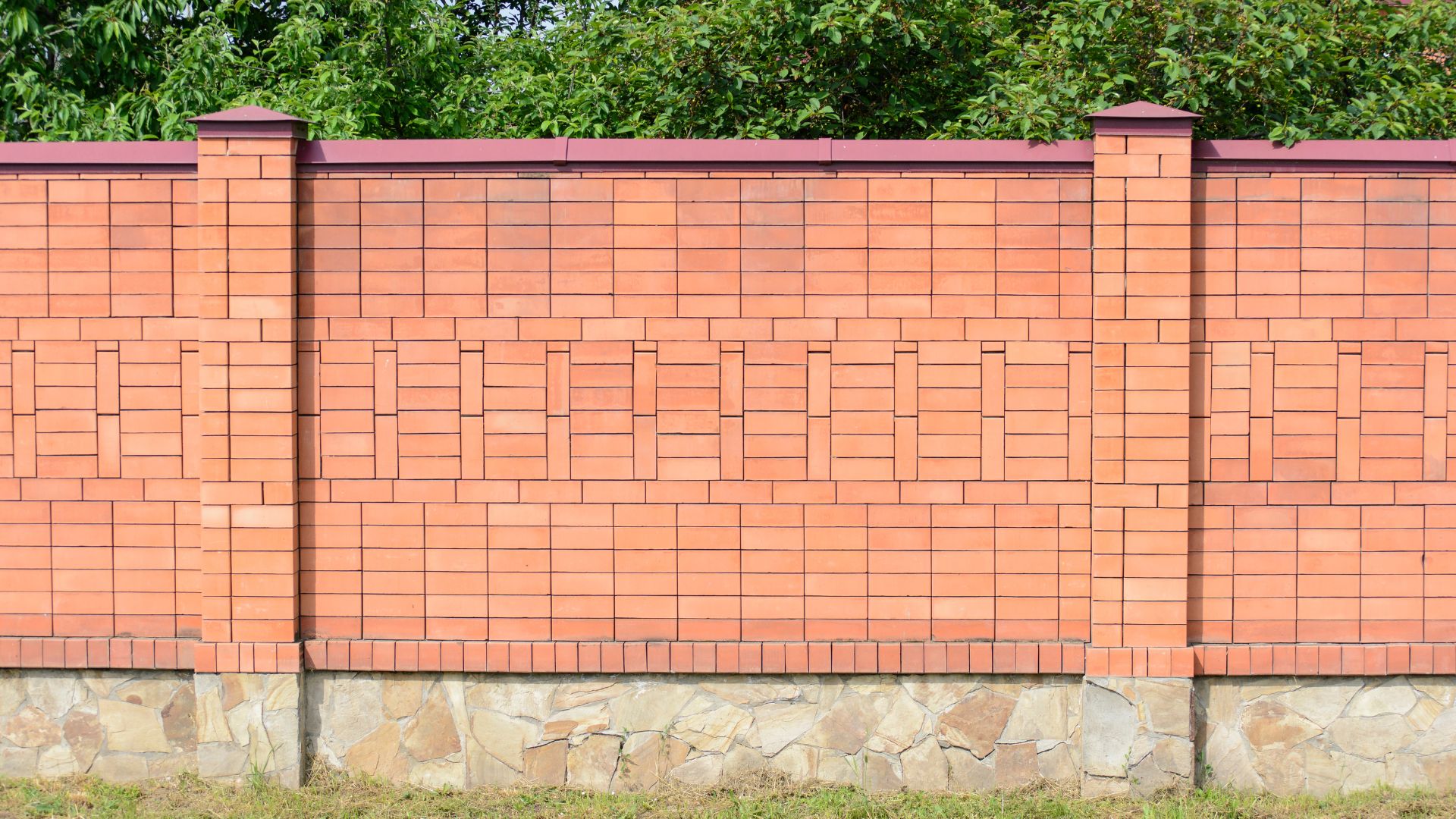
Popular Colour Choices For Concrete Fence Posts
When it comes to choosing the right color for concrete fence posts, it’s essential to consider how the shade will harmonize with the overall landscape and design of your outdoor space. Concrete fence posts are a durable, long-lasting choice, but selecting the right color can elevate the aesthetic appeal, making your outdoor area not only functional but visually attractive. Here, we’ll explore some of the most popular color options, ranging from subtle neutrals to bold and modern hues, helping you pick the best option for your home.
Neutral Colours for Timeless Elegance
Neutral colors are often a popular choice for concrete fence posts because of their understated and versatile nature. These tones seamlessly blend with the natural surroundings while offering a clean and polished appearance.
- Light Grey: This classic shade is a favorite for many due to its ability to complement concrete’s natural hue. Light grey offers a timeless appeal, balancing neutrality with a subtle touch of sophistication. It’s particularly effective for homeowners who prefer a minimalistic design that looks neat and polished without drawing too much attention.
- Beige or Sandstone: If you’re looking for a warmer neutral tone, beige or sandstone is an excellent option. These shades provide a soft, natural appearance, perfect for blending in with earthy surroundings like gardens or stone patios. They create a welcoming, warm ambiance without overpowering the outdoor setting.
- White: For those who love a clean, bright aesthetic, white fence posts offer a striking contrast against darker fences, greenery, or even colored flowers. While it makes a bold statement, white does require more upkeep, as it can show dirt and wear more easily than darker tones. However, for a pristine, sharp look, white is worth the extra maintenance.
Earthy Tones for a Natural Vibe
Earthy tones are excellent for homeowners looking to create a harmonious connection with nature. These shades are warm, inviting, and often work best when blending into outdoor environments like gardens, wooden fences, or rustic landscapes.
- Brown or Terracotta: These colors are ideal for those seeking an organic, warm feel. Brown and terracotta shades work beautifully alongside wooden fences, enhancing a natural or rustic theme. The rich hues offer a sense of earthiness, making them perfect for traditional gardens or properties with a lot of natural wood elements.
- Olive or Sage Green: For those who prefer a color that fades into the background, olive or sage green is a great choice. These tones are perfect for blending into lush greenery, ensuring the fence posts don’t stand out but rather complement the surrounding foliage. They’re ideal for homes with a garden-focused aesthetic, offering a seamless integration with nature.
Bold Colours for a Modern Look
If you’re drawn to contemporary, modern design, bolder colors can make a strong statement. These colors not only add contrast but also introduce a sleek, sophisticated vibe that can elevate the overall look of your outdoor space.
- Charcoal or Dark Grey: For homeowners looking for a modern yet subtle statement, charcoal or dark grey is a fantastic choice. These darker shades are sleek and contemporary, offering a sense of sophistication. They work exceptionally well with modern homes, creating a dramatic contrast without feeling too overpowering. Dark grey also has the added benefit of being low-maintenance, as it hides dirt and stains better than lighter tones.
- Black: If you’re after a more daring, high-contrast option, black fence posts deliver a dramatic effect. Black pairs exceptionally well with minimalistic outdoor designs, offering a bold statement without cluttering the space. It’s a great option for creating a chic, modern aesthetic, particularly when combined with sleek metal or dark wooden fencing. Just like charcoal, black is also low-maintenance and can make any outdoor space feel more refined.
Custom or Accent Colours for Personal Flair
For those who want their outdoor space to have a unique personality, custom or accent colors are a great way to showcase individuality while still keeping things tasteful.
- Navy Blue or Deep Green: These rich, deep colors are perfect for adding a bit of personality without being too loud. Navy blue and deep green can offer a sophisticated touch to outdoor spaces, working well in modern or traditional settings. They are especially effective in spaces where you want to introduce color subtly while maintaining an elegant atmosphere.
- Muted Pastels (Lavender, Pale Blue, Soft Pink): For a more whimsical, artistic approach, muted pastels are perfect. These colors are ideal for cottage-style homes or gardens with a charming, vintage appeal. Lavender, pale blue, and soft pink bring a sense of softness and creativity, making them excellent choices for those who love a garden with character and an artistic flair.
Choosing the right color for your concrete fence posts can significantly enhance the look and feel of your outdoor space. Whether you prefer neutral tones for a subtle, polished look, earthy hues for a natural feel, or bold colors for a modern vibe, there’s a shade that fits your aesthetic preferences. Custom and accent colors also allow for personal expression, adding a unique touch to your property. By carefully selecting the right color, you can transform your concrete fence posts from a simple functional element to a key part of your landscape design.

Choosing The Right Type Of Paint For Concrete Fence Posts
When it comes to painting concrete fence posts, selecting the right type of paint is crucial for ensuring long-lasting protection and a polished appearance. Concrete is a highly porous material that endures various environmental conditions, so using the wrong paint could result in premature wear and chipping. Below, we’ll explore the top paint options and finishes for concrete fence posts, helping you make an informed decision.
Outdoor-Specific Paint
Concrete fence posts are exposed to the elements year-round, which is why it’s essential to choose a weather-resistant, outdoor-specific paint. These paints are formulated to endure harsh UV rays, rain, snow, and temperature fluctuations. Not only do they offer protection from moisture that could seep into the concrete and cause damage, but they also prevent fading and cracking due to prolonged sun exposure. Selecting a high-quality exterior-grade paint ensures your concrete posts remain visually appealing and well-protected against the weather over time.
Acrylic Latex Paint
Acrylic latex paint is one of the most recommended options for painting concrete fence posts. One of its standout qualities is its flexibility, allowing it to expand and contract along with the concrete as temperatures change. Concrete naturally expands in warm weather and contracts in cooler conditions, which can cause paint to crack if it’s not flexible enough. Acrylic latex not only adheres well to concrete surfaces but also offers durability and resistance to peeling or flaking. Additionally, it’s water-based, making it easier to clean up and eco-friendly while still providing a strong protective layer against the elements.
Masonry Paint
For concrete fence posts, masonry paint is a go-to option. Specifically formulated for use on concrete and other masonry surfaces, this paint provides superior coverage and protection. Its thicker consistency ensures that it fills in small cracks and imperfections in the concrete, which enhances the durability and appearance of the posts. Additionally, masonry paint is designed to be highly water-resistant, making it an excellent choice for areas prone to heavy rainfall or humidity. It often contains ingredients that help prevent mold and mildew growth, ensuring the posts remain in top condition for years to come.
Choosing the Right Paint Finish
Once you’ve selected the type of paint, it’s time to decide on the finish. Concrete fence posts can be painted in a range of finishes, each offering its own aesthetic appeal and maintenance considerations.
- Matte Finish: If you’re looking for a non-reflective, natural look, a matte finish is ideal. This finish provides a more understated appearance but may be harder to clean, as dirt and grime can stick to the surface more easily. Matte finishes are perfect if you want your fence posts to blend into the surroundings without drawing too much attention.
- Satin Finish: A satin finish strikes a balance between matte and gloss. It offers a slight sheen that gives the concrete posts a more polished look without being too reflective. Satin finishes are relatively easy to clean and maintain, making them a popular choice for outdoor applications where both appearance and practicality matter.
- Gloss Finish: For a bold, striking look, a gloss finish is the way to go. Glossy finishes reflect light, giving your fence posts a shiny, vibrant appearance. While this finish can highlight imperfections in the concrete, it is also the easiest to clean. If you want your fence to stand out and are willing to put in a bit of extra effort to maintain its sheen, gloss might be your best option.
Choosing the right paint for concrete fence posts comes down to selecting a durable, outdoor-specific option that can withstand the elements. Whether you opt for acrylic latex or masonry paint, both provide excellent protection and flexibility. Don’t forget to consider the finish, as this will affect both the aesthetic and the maintenance level of your fence. By making the right choices, you’ll ensure that your concrete fence posts remain durable, protected, and visually appealing for years to come.
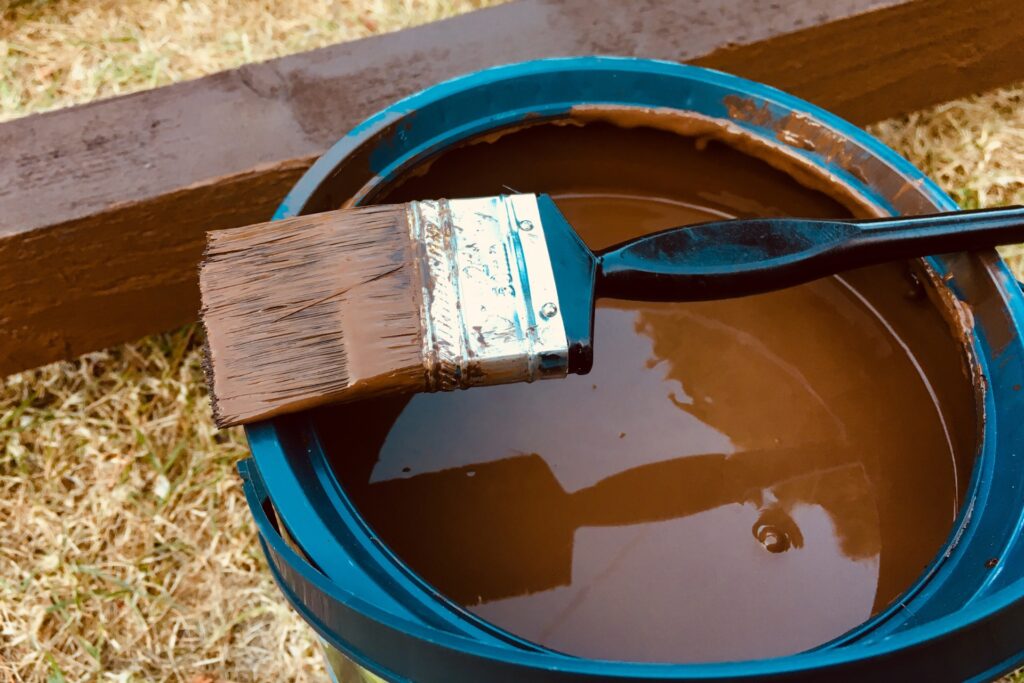
Step-By-Step Guide To Painting Concrete Fence Posts
Painting concrete fence posts can greatly enhance the aesthetic appeal of your outdoor space while providing added protection against weathering. However, to achieve a professional-looking, durable finish, it’s important to follow a systematic approach. This guide will take you through each step to ensure your painted concrete fence posts last for years.
Preparing the Surface
The first and most important step in painting concrete fence posts is proper surface preparation. Without a clean and smooth surface, the paint won’t adhere correctly, leading to a short-lived finish.
- Clean the Posts Thoroughly: Start by removing all dirt, grime, moss, mildew, and any other buildup from the concrete posts. You can use a stiff-bristle brush and a garden hose, or for more stubborn stains, consider using a pressure washer. Ensure the posts are completely dry before moving to the next step, as moisture can interfere with the paint application.
- Repair Any Cracks or Imperfections: Examine the surface for any cracks or holes. If you find any, fill them using a concrete filler. This step is essential to create a smooth, even surface that will allow the paint to adhere properly and look uniform.
- Sand the Surface Lightly: Once repairs are done and dried, lightly sand the surface to remove any rough patches or loose debris. This step will also improve paint adhesion, giving you a smoother, longer-lasting result. Use a medium-grit sandpaper, and after sanding, clean the dust off with a damp cloth.
Priming the Posts
Priming is a crucial step that sets the foundation for a lasting paint job on concrete surfaces. Skipping this step could result in peeling, bubbling, or premature fading of the paint.
- The Importance of Using a Concrete Primer: Concrete is a porous material, which means it can absorb paint unevenly without a proper primer. Applying a concrete primer helps to seal the surface, creating an even, smooth base for the paint. This ensures better adhesion, prevents the paint from soaking into the concrete, and helps the color remain vibrant over time.
- Tip: Choose Moisture-Resistant and Mold-Preventing Primers: When selecting a primer, look for one that not only adheres well to concrete but also provides moisture resistance and protection against mold and mildew. These features are especially important for outdoor structures like fence posts, which are constantly exposed to the elements.
Painting Process
Once the primer has dried, you’re ready to move on to the actual painting process. Choosing the right tools and applying the paint correctly are key to achieving a professional-looking finish.
- Tools You’ll Need
- Brushes: Best for detailed work or smaller posts.
- Rollers: Great for covering larger surfaces quickly and evenly.
- Sprayers: If you have many posts to paint or want a fast, smooth finish, sprayers are ideal, though they require more preparation and technique to avoid overspray.
Each tool has its own advantages, so choose based on the size of your project and the finish you desire.
- Apply Paint in Thin, Even Layers: Avoid the temptation to apply a thick coat of paint. Instead, apply thin, even layers to prevent drips and achieve a smooth, even finish. Thicker coats can lead to uneven drying, drips, and flaking over time.
- Allow Drying Time Between Coats: For the best results, patience is key. Let each coat dry completely before applying the next one. Typically, two to three coats of paint are recommended for optimal coverage and durability. The drying time can vary depending on the type of paint used, so always check the manufacturer’s instructions, but generally, you’ll want to wait at least 24 hours between coats.
Sealing the Paint
After all the hard work of painting, you’ll want to protect your effort by sealing the painted posts. This final step not only enhances the durability of the paint job but also helps it withstand outdoor conditions over time.
- The Importance of Sealing: A sealer acts as a barrier against harmful elements like UV rays, moisture, and fluctuating temperatures. Without a protective seal, the paint can fade, peel, or crack over time, especially when exposed to harsh weather conditions.
- Tip: Use a Clear, Weather-Resistant Sealer: Opt for a clear sealer that is designed for exterior use and offers protection against UV rays and moisture. This will help prolong the life of your paint job, keeping it looking fresh for years to come. Apply the sealer in thin, even coats, and make sure to follow the manufacturer’s instructions regarding drying time and additional coats if necessary.
By following these step-by-step instructions, you’ll achieve a professional, long-lasting finish on your concrete fence posts. With the right preparation, primer, paint, and sealer, your fence will not only look great but also be well-protected against the elements.
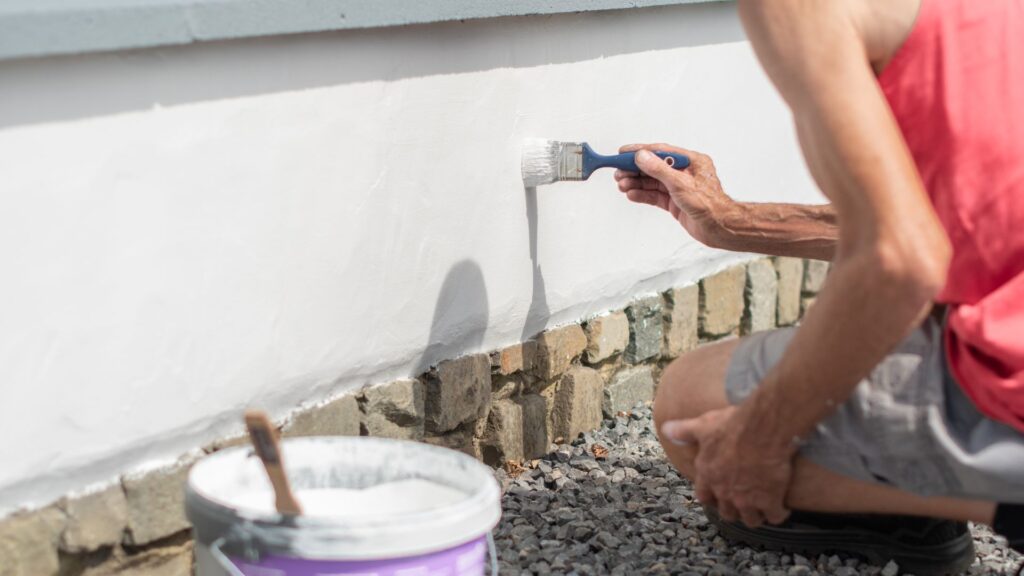
Creative Ideas For Painting Concrete Fence Posts
When it comes to enhancing the look of concrete fence posts, adding a creative touch with paint is a simple yet highly effective way to transform your outdoor space. Whether you’re aiming for a subtle aesthetic or a bold statement, the right paint design can elevate the appearance of your fence and make it a standout feature in your yard. Here are a few creative ideas to inspire your next painting project.
Two-Tone Designs
One of the simplest yet most effective ways to add visual interest to concrete fence posts is through two-tone painting. By selecting two complementary colors, you can create a balanced and stylish look. Typically, one color is used for the base of the post, while the second is applied to the top. This approach not only adds contrast but also gives the posts a more polished and cohesive appearance. For instance, you could opt for neutral tones like grey and beige for a subtle, sophisticated look, or go for bolder shades like navy and white for a more dramatic effect. The key here is to choose colors that work well together and complement the rest of your outdoor décor.
Stencils or Patterns
If you’re aiming to inject a bit of personality and artistry into your outdoor space, consider using stencils or patterns on your concrete fence posts. This method allows you to add intricate designs with minimal effort. Geometric shapes, floral patterns, or even abstract designs can be applied using stencils, giving each post a unique, customized look. Stencils are also a fantastic way to add symmetry and detail without requiring advanced painting skills. You can find stencils in a variety of designs, from traditional to modern, making it easy to match the style of your home. Additionally, using a combination of colors within these patterns can add layers of depth and make your fence posts a true focal point in your garden.
Ombre Effects
For those looking for a modern, chic design, an ombre effect can be an excellent choice. This technique involves creating a gradual transition from one color to another, usually from a darker shade at the base of the post to a lighter shade at the top (or vice versa). The result is a smooth, flowing color gradient that is both stylish and visually appealing. An ombre design can give your concrete fence posts a contemporary, artistic vibe that blends seamlessly into your landscaping. To achieve this look, you’ll need to blend the two colors carefully to ensure a smooth transition. While it may require a bit more time and precision than other methods, the end result is well worth the effort.
By experimenting with these creative painting ideas, you can turn ordinary concrete fence posts into a distinctive and attractive feature in your outdoor space. Whether you’re drawn to the clean lines of a two-tone design, the artistic flair of stenciled patterns, or the modern elegance of an ombre effect, there are plenty of ways to express your style and enhance the overall look of your yard. All it takes is a bit of creativity, some quality paint, and a vision for your space to achieve a result that will impress your neighbors and boost your home’s curb appeal.

Common Mistakes To Avoid When Painting Concrete Fence Posts
Painting concrete fence posts may seem straightforward, but there are a few common mistakes that people often make, which can lead to unsatisfactory results. Whether you’re refreshing the look of an old fence or finishing up a new one, avoiding these errors will ensure a durable and visually appealing outcome. Here’s a look at the most frequent mistakes and how to steer clear of them.
Skipping Primer
One of the biggest mistakes you can make when painting concrete fence posts is skipping the primer. Concrete is a porous material, meaning it can absorb moisture and paint unevenly if not properly prepared. Primer acts as a sealant, creating a smooth and even surface for the paint to adhere to. Without it, your paint job may peel or flake off prematurely, especially when exposed to outdoor elements like rain, snow, or UV rays.
Using a primer designed specifically for masonry ensures that the paint bonds well to the concrete, extending the life of your paint job. Additionally, primer helps to cover any imperfections in the concrete, resulting in a more polished and professional-looking finish. So, even though it adds an extra step to your project, skipping primer can lead to a shorter lifespan for your painted posts, costing you more time and effort down the line.
Not Cleaning or Repairing the Posts
Before you even think about applying paint, you need to make sure that the fence posts are properly cleaned and repaired. This is another common mistake that can lead to an uneven, unattractive finish, or worse—paint that doesn’t last. Concrete posts accumulate dirt, grime, moss, and other debris over time, all of which can interfere with the paint’s ability to adhere to the surface.
Start by giving your posts a good scrub with water and a mild detergent to remove any surface contaminants. For older posts, you may also need to power wash them to eliminate deeper dirt and debris. If there are cracks or chips in the concrete, fill them in with a masonry repair compound and allow it to fully dry before priming and painting. Neglecting this crucial prep work means that any dirt, cracks, or damage will show through the paint, leading to an unsightly finish and reducing the paint’s durability.
Using the Wrong Paint Type
Another major pitfall is using the wrong type of paint. Concrete fence posts are exposed to various weather conditions, so using a paint that isn’t designed for outdoor or masonry surfaces can be disastrous. Standard interior paint or general-purpose paint simply won’t hold up to the elements. Over time, they can crack, fade, or peel, leaving your fence posts looking worse than before.
For the best results, always use paint that is specifically formulated for masonry or exterior use. These types of paints are designed to withstand moisture, temperature changes, and UV exposure, ensuring that your paint job remains vibrant and intact for years. Additionally, they’re often more resistant to mildew and mold growth, which is crucial for outdoor surfaces like concrete fence posts.
Painting concrete fence posts requires careful planning and attention to detail. By avoiding these common mistakes skipping primer, neglecting to clean or repair the posts, and using the wrong type of paint you can achieve a durable, professional-looking finish that will stand the test of time. Taking the extra time to prep and choose the right materials will ensure that your painted concrete fence posts look great and last for years to come.
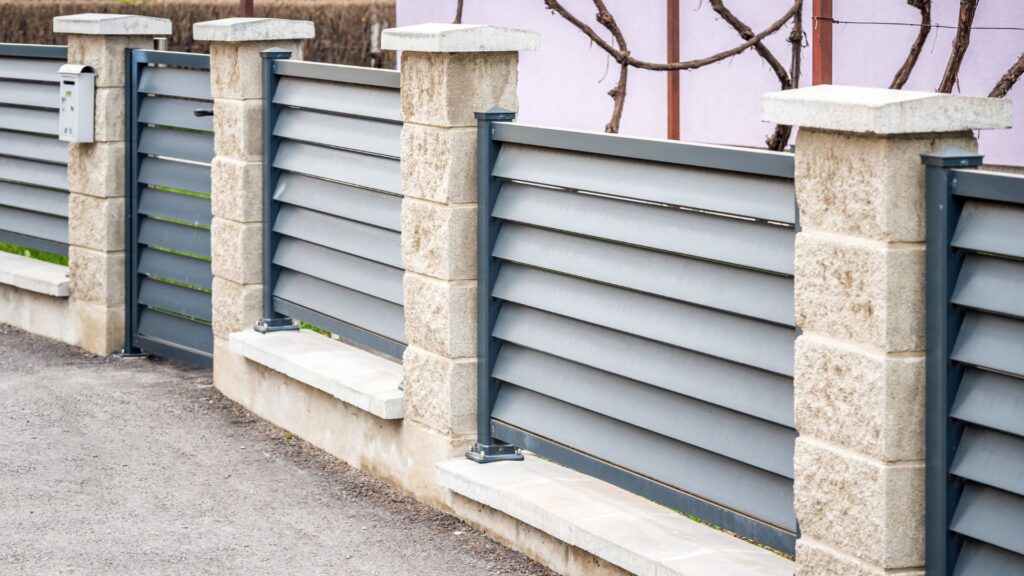
FAQs: About What Colour To Paint Concrete Fence Posts
Conclusion
In conclusion, selecting the right color and properly preparing your concrete fence posts are essential steps to achieving a durable and visually appealing result. By choosing paints that are specifically designed for outdoor surfaces, priming your posts for optimal adhesion, and using quality brushes or rollers, you ensure a finish that lasts and enhances the overall look of your outdoor space. Proper preparation, including cleaning and sealing, helps protect the concrete from the elements, while your chosen color can either blend seamlessly with the environment or make a bold statement, adding curb appeal to your home. Make your outdoor space stand out with a fresh, vibrant update today!
Find A Professional Fencing Company Near You!
- Farm Fencing Waikato
- Fence Builders Alexandra, Clyde & Cromwell
- Fence Builders Auckland
- Fence Builders Central Otago
- Fence Builders Christchurch
- Fence Builders Hamilton Waikato
- Fence Builders Invercargill
- Fence Builders Kapiti
- Fence Builders Lower Hutt
- Fence Builders Manawatu
- Fence Builders Palmerston North
- Fence Builders Queenstown
- Fence Builders Taupo
- Fence Builders Upper Hutt
- Fence Builders Wanaka
- Fence Builders Wellington
- Fencing Contractors Levin
- Fencing Contractors Napier
- Fencing Hastings
- Fencing Hawkes Bay
- Fencing Kerikeri
- Fencing Mangawhai
- Fencing Nelson
- Fencing New Plymouth
- Fencing Paihia
- Fencing Taranaki, New Plymouth
- Fencing Warkworth
About the Author:
Mike Veail is a recognized digital marketing expert with over 6 years of experience in helping tradespeople and small businesses thrive online. A former quantity surveyor, Mike combines deep industry knowledge with hands-on expertise in SEO and Google Ads. His marketing strategies are tailored to the specific needs of the trades sector, helping businesses increase visibility and generate more leads through proven, ethical methods.
Mike has successfully partnered with numerous companies, establishing a track record of delivering measurable results. His work has been featured across various platforms that showcase his expertise in lead generation and online marketing for the trades sector.
Learn more about Mike's experience and services at https://theleadguy.online or follow him on social media:

